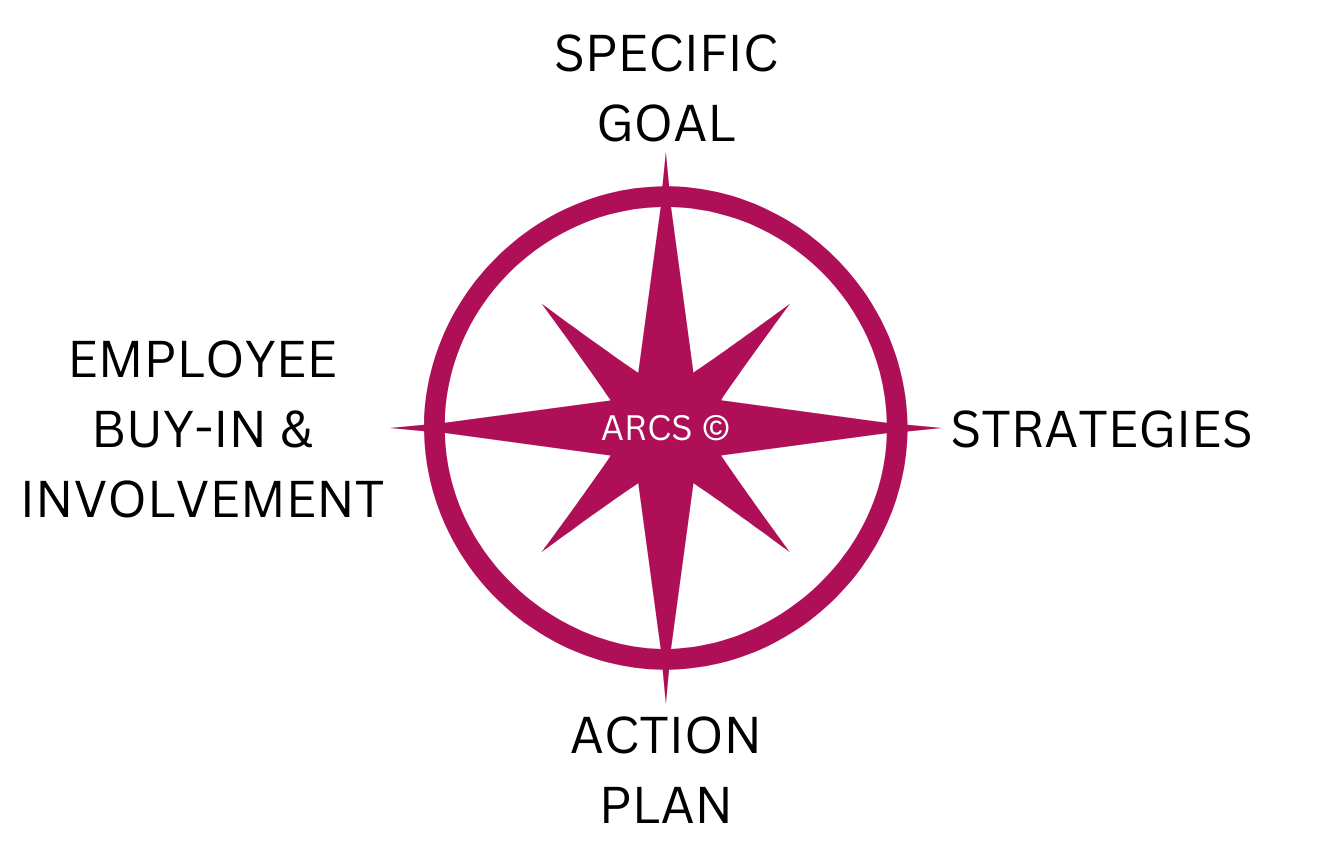Should we treat our school staff as customers?
How about if we treated our staff as customers? Would this change our perceptions, values, and actions as leaders? This week, I enjoyed exploring the ARCS© model. It caught my attention for its innovative approach to organisational culture. If organisational culture is the invisible glue that holds a school together, then a model like ARCS© could serve as the blueprint for understanding, measuring, and strengthening that adhesive force. As a tool, it identifies the elements of a school's culture but also to offer actionable steps for improvement.
The ARCS© Model
ARCS© stands for Algorithmic Representation to Catalyze Satisfaction. In simpler terms, it's a roadmap designed to guide organisations toward creating a more satisfying and productive environment for all stakeholders—be it leadership, teachers, or students. The model helps you pinpoint your current location, set your destination, and map out the most effective route to get there, ensuring everyone is committed to the journey.
“Fundamentally ARCS® follows the core principals of coaching. It believes in the potential and the capabilities of the client organization. It believes that they have the answers to all the questions that they currently face. All that is required is self-awareness and a definite growth towards predefined goals.”
The Four Pillars of ARCS©
The ARCS© model is built on four foundational pillars: specific goals, strategies, action plans, and most importantly for me, employee buy-in and involvement. These pillars serve as the cornerstones that support the entire structure of your school's organisational culture.
Why ARCS© is a Good Fit for Schools
I’ve mentioned before that international schools are complex ecosystems, teeming with diverse cultures, languages, and a constant influx of new staff. Here's why I think the ARCS© model is an invaluable tool:
Employee Buy-in
Staff turnover is a common challenge in schools, especially internationally. The ARCS© model ensures that everyone has a voice in shaping the school's direction, making it easier for new staff to integrate and contribute.
Cultural Complexity
The model encourages a deep dive into the existing organisational culture, a crucial step in schools where staff diversity is the norm rather than the exception.
Goal Alignment
Aligning everyone's expectations is like tuning an orchestra; each instrument must be in harmony. The ARCS© model provides the framework for setting specific, achievable goals that resonate with all stakeholders.
The 7 'I's of ARCS©: A Brief Overview
The ARCS© model is broken down into seven steps, known as the 7 'I's. This is just a snapshot; stay tuned for future blog posts where we'll explore each 'I' in greater depth:
Information: Gathering data from all stakeholders to understand the current status.
Identify Factors: Isolating key elements that require immediate attention.
Inspect Cause: Understanding the underlying reasons for these elements.
Ideate: Setting objectives and deciding how to communicate them.
Internal Marketing Strategy: Creating a strategy to engage and motivate staff.
Implementation: Turning plans into action.
Inspect Success: Measuring outcomes against set benchmarks.
Internal Marketing: The Pulse of ARCS©
I love the idea of internal marketing: viewing your staff as internal customers whose needs and wants align with the school's objectives. Internal Marketing in my mind is a purposefully planned effort by a school to motivate its staff towards implementing and integrating educational and organisational strategies focused on student and parent satisfaction. It aims to inform, inspire, and align staff to speedily implement all academic and administrative strategies with agility. This approach serves to achieve both hard goals (academic performance metrics, enrollment rates) and soft goals (school culture, parent engagement, student well-being) while embodying the school's vision, mission, and values.
“Internal Marketing is marketing like purposefully planned effort by the organization for the internal customers to inform, inspire, align, speedily implement all corporate and functional strategies with agility towards achieving its hard (top line & bottom line) and soft (goodwill, customer delight, dealing with exigency) goals while personifying the vision, mission, values of the company and building its character.”
The ARCS© model may offer a structured yet flexible framework for enhancing organisational culture. It's not just about setting a destination; it's about ensuring everyone on board is committed to reaching it.
Let's circle back to where we started: If we treated our staff as customers, how might that shift our approach to leadership? Could this perspective be the missing piece in the puzzle of creating a truly cohesive, effective, and satisfying school environment? It's a question worth pondering and that’s what I intend to continue doing each week in this blog.
About This Series
As Shane progresses through his Organisational Development Coaching Certification, this blog series serves as both a record of his educational journey and a practical guide for leaders in international schools. Each article simplifies complex OD principles into actionable insights, specifically tailored for the multifaceted world of international education.


